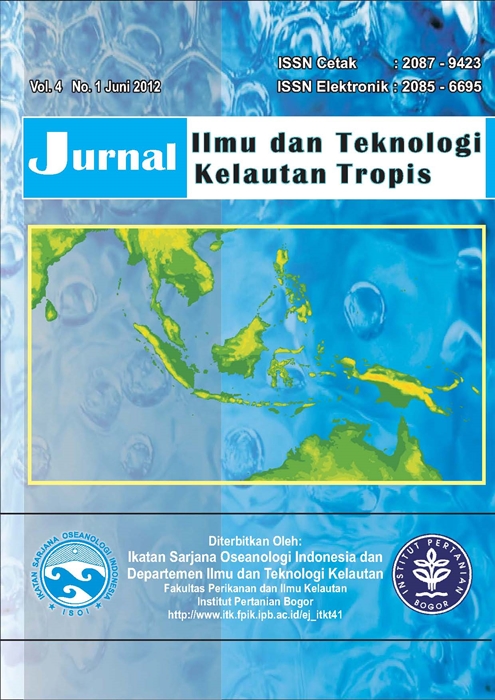FISIOLOGY ADAPTATION OF SANDY ANEMONE (Heteractis malu) EXPOSED TO ELEVATED TEMPERATURES: LABORATORY CONDITION
Abstract
Sandy anemone (Heteractis malu), belongs to Phylum Cnidaria, physiologically is very close to coral stone, which was a major component of coral reef ecosystems. As coral stone, Heteractis malu also has symbiotic algae (Zooxanthella). Physiologically, the alga symbiotic relationship of coral stone is almost similar with Heteractis malu. Maintaining Heteractis malu in the laboratory is relativly easier compared to that of coral stone. Advantages of the Heteractis malu vs. stone coral, its body is not covered by limestone makingit easier in processing analyses. The response of the anemone to stress is expected similar with coral stone. This research aims to analyze the response and adaptation of Heteractis malu to the temperature increase of 1 °C and 2 °C of the normal temperature (28 °C). The impact of temperature increases on Heteractis malu did not significantly affect the density of zooxanthellae, however, there was a significant increase of mitotic index. In addition, during a recovery process, Heteractis malu immune system did not show a significant increase based on its mitotic index results tended to decrease during the second phase of stress treatment.
Keywords: Adaptation, sandy anemone (Heteractis malu), temperature increase,, zooxanthellae
Authors
This work is licensed under a Creative Commons Attribution 4.0 International License.
Jurnal Ilmu dan Teknologi Kelautan Tropis i is an open-access journal, meaning that all content is freely available without charge to the user or their institution. Users are allowed to read, download, copy, distribute, print, search, or link to the full texts of the articles in this journal without needing to request prior permission from the publisher or the author.
All articles published by Jurnal Ilmu dan Teknologi Kelautan Tropis are licensed under the Creative Commons Attribution 4.0 International License. This allows for unrestricted use, distribution, and reproduction in any medium, provided proper credit is given to the original authors.
Authors submitting manuscripts should understand and agree that the copyright of published manuscripts is retained by the authors. Copyright encompasses the exclusive rights of authors to reproduce, distribute, and sell any part of the journal articles in all forms and media. Reproduction of any part of this journal, its storage in databases, and its transmission by any form or media is allowed without written permission from Jurnal Ilmu dan Teknologi Kelautan Tropis.


